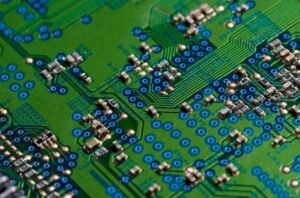What is Neural?
Neural, short for neural network, is a computational model inspired by the structure and function of the human brain. It is a subset of artificial intelligence (AI) that has gained significant attention and application in various industries.
Key Takeaways
- Neural networks are computational models based on the structure and function of the brain.
- They are a subset of artificial intelligence and widely used in many industries.
- Neural networks learn patterns and correlations from data, enabling them to make predictions or perform tasks.
**Neural networks** are composed of interconnected processing units, called **neurons**, that work together to process and transmit information. These neurons are organized into layers, including an input layer, one or more hidden layers, and an output layer. Each neuron receives inputs, applies a transformation function to those inputs, and passes the result to other connected neurons, eventually generating an output.
Through a process called **training**, neural networks learn to recognize complex patterns and relationships in data. They are fed with a large dataset consisting of inputs and corresponding expected outputs. The network adjusts the strengths of connections between neurons (weights) iteratively until it minimizes the difference between predicted outputs and the expected outputs. This iterative process is often referred to as **machine learning**.
**One interesting fact** about neural networks is that they are capable of learning and recognizing patterns that may be difficult to articulate or define explicitly. This characteristic has led to their successful application in various fields, such as image and speech recognition, natural language processing, and even self-driving vehicles.
Types of Neural Networks
There are several types of neural networks, each with its own architecture and purpose. Here are three common ones:
-
Feedforward Neural Networks
In a feedforward neural network, information flows in one direction, from the input layer to the output layer. There are no feedback connections, which means data is processed layer by layer without loops or recurrent connections.
-
Recurrent Neural Networks
Unlike feedforward networks, recurrent neural networks (RNNs) have connections between neurons that form loops, allowing feedback and capturing temporal dependencies in sequential data. These networks excel at tasks like speech and language processing.
-
Convolutional Neural Networks
Convolutional neural networks (CNNs) are specifically designed for analyzing visual data. With a hierarchical structure and specialized layers, they can effectively extract features from images or videos, making them suitable for tasks like image classification and object detection.
Applications of Neural Networks
Neural networks have found extensive applications across various domains. Here are some notable examples:
- **Medical diagnosis**: Neural networks can analyze medical images, such as X-rays and MRI scans, to aid in the diagnosis of diseases.
- **Financial forecasting**: By processing historical financial data, neural networks can predict stock prices or forecast market trends.
- **Natural language processing**: By understanding the patterns and structure of language, neural networks can generate human-like text, perform language translation, and even enable chatbots.
Neural Networks vs. Traditional Algorithms
Unlike traditional algorithms, which rely on explicit rules and logic, neural networks learn directly from data. This ability to learn from examples makes neural networks potentially more flexible and adaptable to complex problems. However, they may require large amounts of data and computational resources for training, and their inner workings can be less transparent and harder to interpret compared to traditional algorithms.
Interesting Neural Network Use Cases
Let’s explore a few real-world use cases where neural networks have made significant impacts:
| Use Case | Industry | Benefits |
|---|---|---|
| Image recognition | Computer vision | Automated object detection and classification |
| Speech synthesis | Voice assistants | Human-like voice generation for natural interaction |
| Use Case | Industry | Benefits |
|---|---|---|
| Fraud detection | Financial services | Identifying anomalous patterns to prevent fraudulent activity |
| Autonomous driving | Automotive | Enabling self-driving vehicles through advanced perception systems |
| Use Case | Industry | Benefits |
|---|---|---|
| Language translation | Translation services | Real-time translation between different languages |
| Music recommendation | Entertainment | Personalized song suggestions based on user preferences |
Neural networks continue to evolve and revolutionize various industries, empowering machines to perform complex tasks that were once the domain of humans. Their ability to learn and adapt from data brings unprecedented opportunities and challenges for the future.

Common Misconceptions
Misconception: Neural Networks are Exclusive to AI
It is a common misconception that neural networks exclusively belong to the field of Artificial Intelligence (AI). While neural networks are heavily utilized in AI applications, they are not limited to this domain. In fact, neural networks can be effectively used in various fields such as pattern recognition, image processing, and financial analysis.
- Neural networks have applications in predictive analytics.
- They are used for natural language processing tasks.
- Neural networks have been applied in robotics and control systems.
Misconception: Neural Networks Mimic Human Brains Exactly
Another misconception surrounding neural networks is that they fully mimic the workings of the human brain. While neural networks are inspired by the brain’s structure and functionalities, they do not completely replicate it. Neural networks comprise artificial neurons and layers that process data using mathematical computations, whereas the human brain is infinitely complex in its behavior and functions.
- Neural networks lack consciousness and self-awareness.
- They do not possess biological attributes like emotions and intuition.
- Neural networks are not capable of spontaneity and creativity.
Misconception: More Hidden Layers Improve Neural Network Performance
A common misconception is that adding more hidden layers to a neural network always enhances its performance. While deep neural networks with multiple hidden layers can improve performance in certain scenarios, blindly increasing the number of hidden layers does not necessarily lead to better results. The architecture and complexity of a neural network should be carefully designed based on the problem at hand and the available data.
- Adding too many hidden layers can lead to overfitting.
- In some cases, a shallow neural network may suffice for the task.
- The number of hidden layers should be determined through experimentation and optimization.
Misconception: Neural Networks Always Outperform Other Algorithms
There is a misconception that neural networks, due to their complex structure, always outperform other machine learning algorithms. While neural networks have been successful in various domains, they are not universally superior. The performance of a neural network depends on multiple factors such as the quality and quantity of training data, proper tuning of hyperparameters, and the nature of the problem being solved.
- For small datasets, simpler algorithms may be more effective.
- Some data patterns may be better suited for decision trees or support vector machines.
- The choice of algorithm should be based on a thorough evaluation of different options.
Misconception: Training a Neural Network is Quick and Easy
Many people have the misconception that training a neural network is a quick and easy process. However, in reality, training neural networks can be time-consuming and resource-intensive. Depending on the complexity of the network and the amount of data, training requires a significant computational power and often involves several iterations of tuning and retraining.
- Training large neural networks may require specialized hardware.
- Fine-tuning hyperparameters can be a time-consuming process.
- Training may involve handling issues such as vanishing or exploding gradients.

The History of Neural Networks
Neural networks have a fascinating history that dates back to the 1940s. Here are some intriguing milestones in the development of this technology:
Applications of Neural Networks
Neural networks have found numerous applications across various industries. Here are some interesting examples:
Top Neural Network Architectures
Neural networks can have different architectures, each with its own advantages and applications. Here are some popular ones:
The Impact of Neural Networks on Healthcare
Neural networks have revolutionized healthcare in various ways. Here are some remarkable effects:
Neural Networks in Finance
Neural networks have proven to be valuable tools in the finance industry. Here are some key applications:
Difference between Artificial Neural Networks and Biological Neural Networks
While artificial neural networks are inspired by biological neural networks, there are important distinctions between the two. Here are some differences:
Advantages of Neural Networks over Traditional Algorithms
Neural networks offer unique advantages, making them superior to traditional algorithms in certain scenarios. Here are some benefits:
The Limitations of Neural Networks
While neural networks are impressive, they also have their limitations. Here are some factors that can hinder their performance:
Neural Networks vs. Machine Learning vs. Deep Learning
Neural networks are often mentioned alongside machine learning and deep learning. Here are the differences between these terms:
The Future of Neural Networks
Neural networks continue to evolve, and their future looks promising. Here are some exciting possibilities:
In conclusion, neural networks have a rich history, wide-ranging applications, and promising future prospects. Understanding their architectures, impact, and advantages over traditional algorithms is crucial for harnessing their potential. However, it’s also essential to acknowledge their limitations and differentiate them from related concepts like machine learning and deep learning. Overall, neural networks stand as a powerful tool that has transformed industries such as healthcare and finance and holds promise for further advancements in the field of artificial intelligence.
Frequently Asked Questions
What is Neural?
Neural refers to a concept that revolves around neural networks, which are computational models inspired by biological neural networks. These networks consist of interconnected artificial neurons, and they are used in various applications like machine learning and artificial intelligence.
How do neural networks work?
Neural networks work by simulating the way the human brain processes information. Inputs are fed into the network, processed through layers of artificial neurons, and produce outputs based on the learned patterns. Through training and adjusting the connection weights, neural networks can learn to recognize and classify complex patterns and make predictions.
What are the applications of neural networks?
Neural networks have a wide range of applications. They are used in image and speech recognition, natural language processing, recommendation systems, autonomous vehicles, financial forecasting, and many more areas where pattern recognition and data analysis are required.
Are neural networks similar to the human brain?
While neural networks are inspired by the brain’s structure and function, they are simplified models and do not fully replicate the complexity of the human brain. Neural networks focus on the computational aspect and information processing capabilities.
Can neural networks learn by themselves?
Neural networks can learn from data through a process known as training. During training, the network adjusts the connection weights between neurons based on the input-output relationship. However, this learning process requires careful design, data quality, and supervision by human experts.
What is deep learning?
Deep learning is a subfield of machine learning that focuses on neural networks with multiple layers. These deep neural networks are capable of learning hierarchical representations of data, allowing them to extract complex features and patterns. Deep learning has shown great success in various areas like computer vision and natural language processing.
Are neural networks vulnerable to attacks?
Yes, neural networks can be vulnerable to various types of attacks. Adversarial attacks involve intentionally manipulating inputs to mislead the network’s outputs. It is an ongoing research challenge to develop robust neural networks that are resistant to such attacks.
What is the future of neural networks?
The field of neural networks is continuously evolving. Researchers are exploring novel network architectures, training algorithms, and optimization techniques. With advancements in hardware and computational power, neural networks are expected to play a significant role in solving complex problems and advancing the fields of artificial intelligence and machine learning.
What are some challenges in neural network research?
Neural network research faces challenges such as interpretability, overfitting, dataset biases, and scalability. Interpreting and understanding the decision-making process of neural networks is still a complex task. Overfitting occurs when the network becomes too specialized in the training data and fails to generalize well on new inputs. Dataset biases can lead to unfair or biased predictions. Scalability becomes a challenge when dealing with large-scale applications and massive amounts of data.
How can I get started with neural networks?
To get started with neural networks, it is recommended to have a basic understanding of mathematics and programming. Learning Python is often beneficial due to the availability of libraries like TensorFlow and PyTorch. There are various online tutorials, courses, and books on neural networks, machine learning, and deep learning that can provide a solid introduction to the topic.




